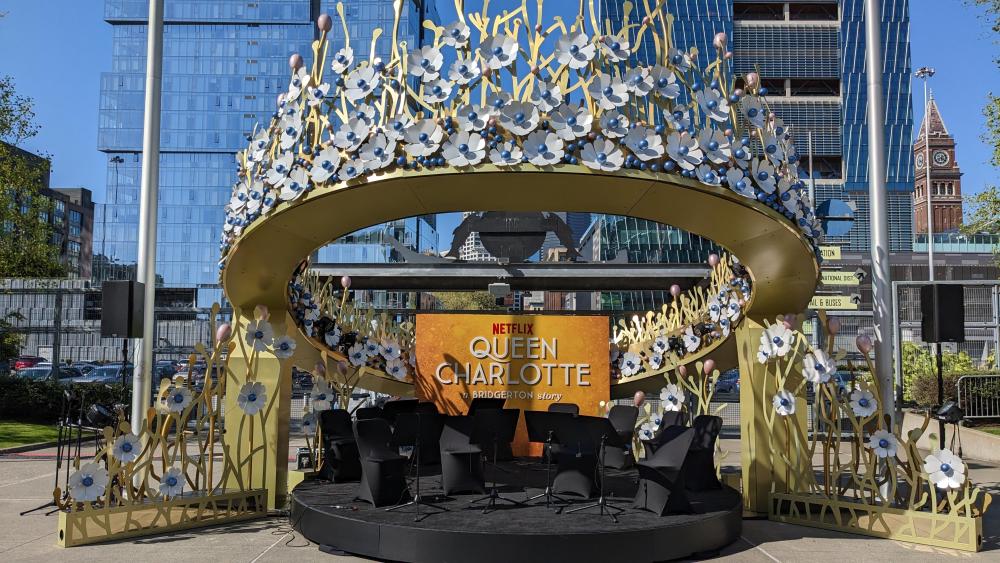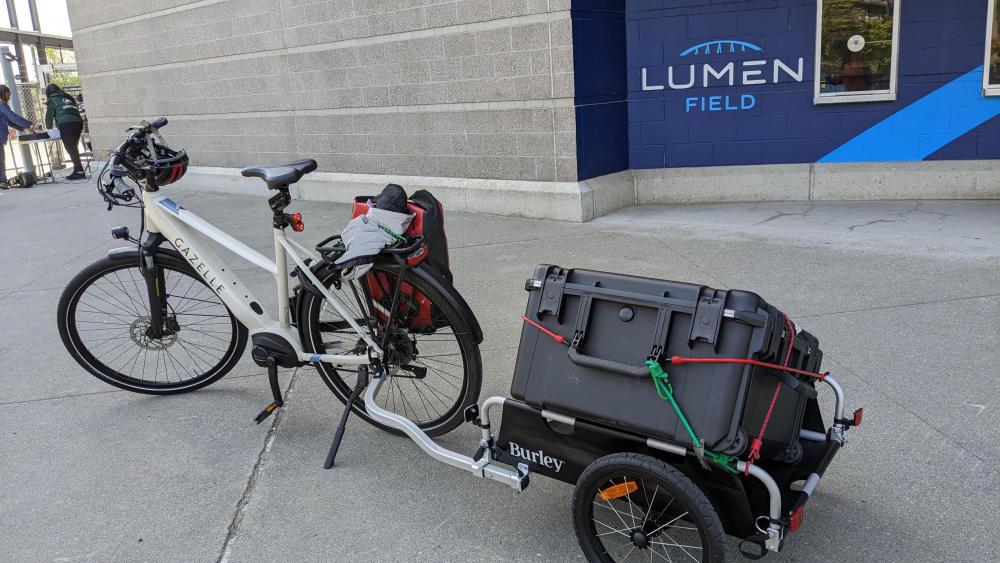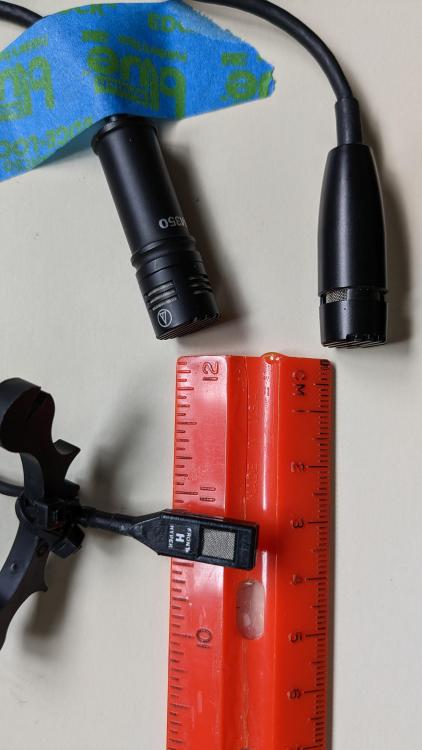
Ira Seigel
Members-
Posts
51 -
Joined
-
Last visited
-
Days Won
1
-
Thanks for these replies, guys. My experience with a DNS 8live so far has been extremely positive. My usage so far has been to use the AES outs of Sennheiser receivers as inputs to the Cedar. Outputs from the Cedar into a Yamaha Rivage for live mixing in a very ambient symphony hall. I've double-patched both the analog outputs straight from the Sennheiser receivers and the AES outputs from the Sennheiser/Cedar chain into the Rivage, just in case there were problems with the Cedar. So far, the unit has performed splendidly. The amount of the room ambience being picked up by the mics - dynamic and condenser wireless mics - is has been dramatically reduced. Cleaner audio coming out of the PA and much improved gain before feedback in stage monitors. And these are the results while keeping the Cedar in "Learn" mode. I haven't delved into the manual settings yet. Overall, so far I'm very pleased with the purchase. Ira
-
I’m interested in the Cedar units - particular their 8Live - for some projects. I’m disappointed that Cedar Audio’s User Manual or website doesn’t have some block diagrams or training videos. The only videos I’ve seen are more geared to marketing. Has anyone come across some information for actual usage - suggestions for settings, system setups, before and after sound clips, etc? I’ve seen discussions in other threads here about providing processed and raw tracks for clients, and that info is helpful to me but not quite on the mark for helping me figure out the best ways to integrate a DNS unit into the signal flow. Thanks.
-
Hello OB1, Thanks for your thoughts here. Yes, for miking orchestras indoors - I usually work for the Seattle Symphony as my day gig - sectional miking is my preferred, with maybe a DPA4099 clip-on on the principals. But when I heard this performance was to be outdoors and the production was carrying SM-57s, I knew that wind and gain-before-feedback would be issues, so my intuition was to get mics as close to the instruments as possible. The very structured time schedule only allowed for 30 mins of soundcheck. With only 6 57s, that would have been more than enough, and I could have sussed out wind and feedback issues without the players on stage. But choosing clip-on mics for everyone necessitated everyone being on stage. My allotted 30 mins was barely enough, with the musicians also being pulled in several different directions in order to soundcheck playing the National Anthem on the soccer field (Lumen Field in Seattle) and hair/makeup/costuming necessities, all of which I usually don't have to deal with when working for the various touring musicians I've worked with over the years. Next time (?) I'll consider bringing 6 MKH 8040s or KSM137s and my little 6 channel Sonosax mixer, instead of the 58 pounds of mixer/road case, mics, etc., that I loaded onto a bicycle trailer for the short ride to the stadium! And I'll remember that the stock foam windscreens might be good for air conditioning noise, but not for 10mph wind noise. AND THANK YOU FOR THE WORD OF THE DAY - DUODECET!!
-
"Cardioid mics are inherently sensitive to wind (and handling) noise" I did not know this. Thanks for the tip, Rick. I hadn't noticed the Rycotes you mentioned on their website. I'll take a look. Also the Microcats - thanks Syncsound (a fellow Pacific Northwester). Ira
-
Ira Seigel started following Sound Devices 970 / 270i / 260i Case or Bag? and Wind Protection for Lavs
-
Recently I was tasked to do a live PA mix for Netflix of a 12-piece string ensemble. In the past, they'd had other engineers use 6 SM-57 on tall booms to mic this orchestra. I decided close-miking for an outdoor venue (a soccer stadium) would be better. I used various mics in my inventory for the task - Audio Technica AT35 and ATM350, DPA4099 and Countryman. All except the DPAs could be considered lavs, with a diameter of 10mm for ATs and 8mm for the Countryman. Because this was an outdoor venue and the performance was getting on sunset, the breeze was significant, and my issue was the uselessness of the foam windscreens for all those mics, including the DPAs, in a windy environment. The foam windscreens are OK in varying degrees for plosives but not for actual wind. In some threads here there is mention of the Bubblebee Windbubbles. These are the only windscreens I can find that are designed for lavs or lav-sized mics. Can anyone comment on the effectiveness of the Windbubbles for this type of application, i.e., close-miking violins, violas, etc with clamp-on or strap-on clips? Thanks very much, Ira Seigel in the Pacific Northwest
-
Question re Sound Devices PixNet on a Pix 260i
Ira Seigel replied to Ira Seigel's topic in Equipment
For anyone that might be interested in this topic, here is the answer to my question from Danny Greenwald at Sound Devices: Hi Ira, Thank you for your email. Since the PIX-260i is no longer available, new firmware is no longer being created. Therefore, we can only work with what we currently have. I assume you are recording WAV MONO files so that you can see the track name for each file. Unfortunately, I don't see a more simplified naming convention than what you have mentioned. If you are recording WAVE POLY, you could use the Scene-Take convention, naming Scene as "Drive 1," but that doesn't help if you have 2 drives recording.... Best regards, Danny -
I am using a Pix 260i as an audio-only recorder. I would like to simplify the file labeling that is used so that each of the tracks has the drive number and the track label, without options for scenes, reels, takes, etc. In PixNet (or otherwise) is there a way to add a File Name Format option so that I only have the information I need? As it exists on my machine, there's only one option that includes Track Name, but it also contains Reel-Scene-Take which is unnecessary and confusing when I'm transferring files and handing them off to a client. TIA, Ira
- 1 reply
-
- 1
-

-
Stereo Mounts for Schoeps, DPA, and Busman Microphones
Ira Seigel replied to NOLAfishwater's topic in Manufacturers & Dealers
Hi. Does anyone know if these are being made by someone? NOLAfishwater's email address is kaputski. Thanks, Ira -
Sorry I wasn't clear. This would be for transportation only, not operating the recorder in the case/bag. Thanks for the suggestion on the 788T/CL8. Great idea! I have one of these 2U Gator bags laying around somewhere. I'll check it out. Plenty of room for a (Dante) switch, mini-keyboard, cans, too. Cheers.
-
I'd like to find a bag (preferably) or case for one of these Sound Devices recorders, plus its AC power supply. I've looked through the usual culprits - PortaBrace, K-Tek, Orca - but I couldn't find anything that looks like it would fit. Anyone have a suggestion? Thanks.
-
Netflix teaser "Dark" first German production
Ira Seigel replied to Matthias Richter's topic in The Daily Journal
What a great discussion! Thank you for the great read. I discovered "Dark" way before I joined this forum. Because I didn't want to disturb my wife while watching it, I used my IEMs instead of my 9.1 system. Everything about the production was A++, the sound panorama was amazing as were those weird and ominous synth music FX. (I believe some of those same synth patches were used on a Norwegian show I just watched called "Equinox".) Now I'll have to go back and listen again to the original soundtrack - maybe with my full speaker system - to be able to enjoy Matthias' work more completely. Money Heist, too, which we can't wait for a Season 4. THANK YOU from the consumer side of the world. -
Eva Cassidy - One Night That Changed Everything
Ira Seigel replied to mono's topic in The Daily Journal
I have been a big Eva Cassidy fan for a while. I believe that recording was made in my hometown, Washington, DC? Can I ask why you posted this? Are you associated in some way with the production? Was it the anniversary of the recording sessions? -
A.K.A. "Chinese handcuffs"
-
I'm coming a little late to this party, but I tried streaming Tenet a few days ago and after 15 minutes I gave up. I could hardly understand a word of the story. With such a hyped film, I was expecting to at least be able to hear the dialog. I don't even know or care what the rest of the film contains. I've liked a lot of his stuff, but this one was unwatchable.
-
Sound Devices 970, 270i, 260i - PIX Caddy or eSATA
Ira Seigel replied to Ira Seigel's topic in Equipment
I think the only reason to record to a Poly WAV file is that it's a lot easier to delete! I was hoping that PIXNET would allow a deletion of multiple files at a time, but it doesn't. Is there any way you've found to delete tracks other than one-at-a-time, which is VERY cumbersome, AND you have to do it to all your drives. What's the secret you've discovered? I won't do the eSATA-to-USB adapter cable. Not worth the risk. Thanks, Ira

.png.279748a58a2b862b7aa5f3b84126e232.png)



